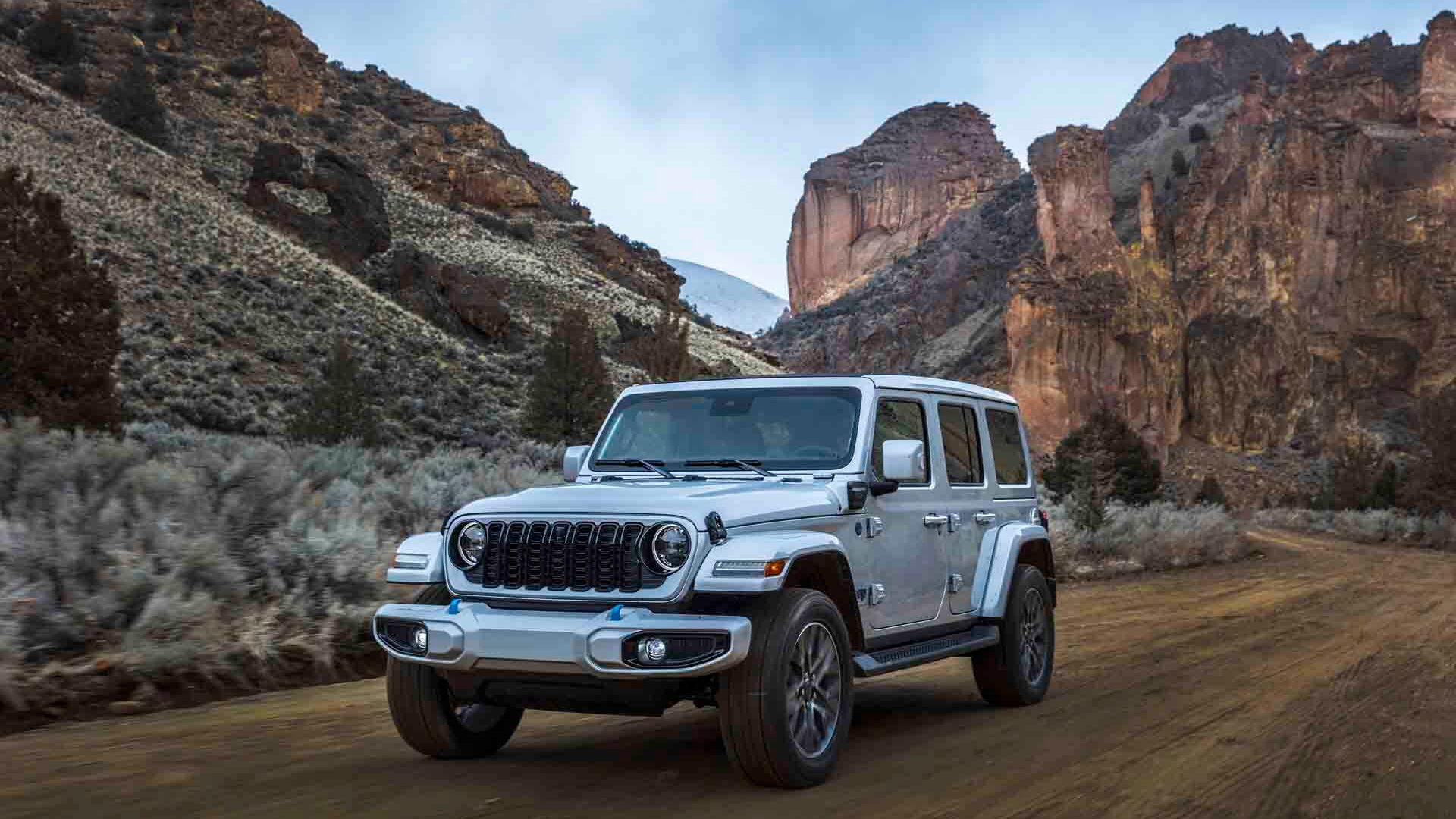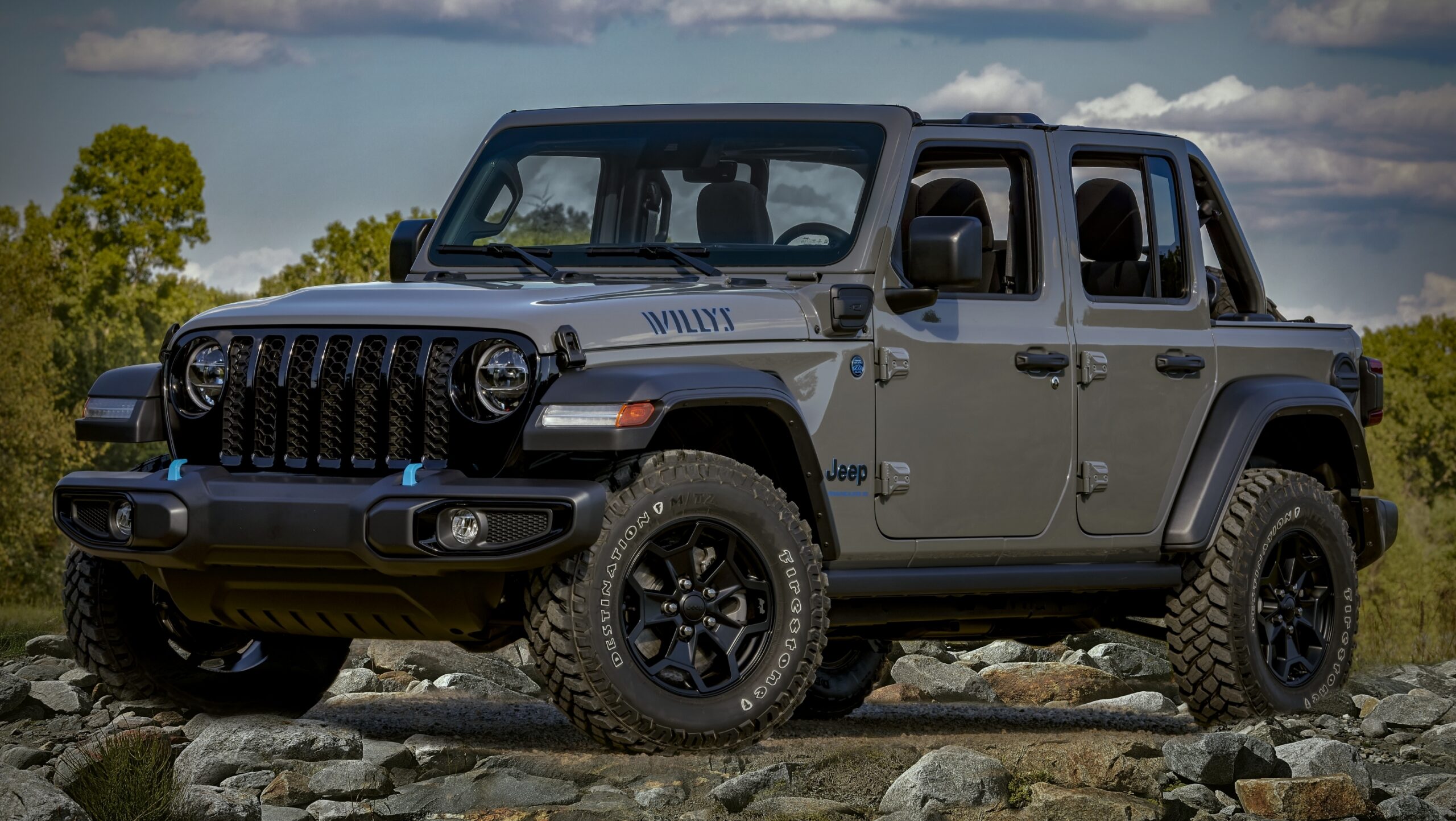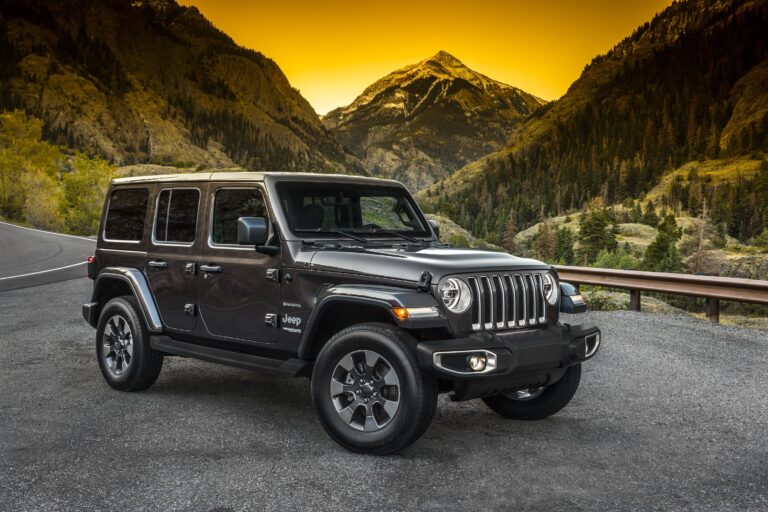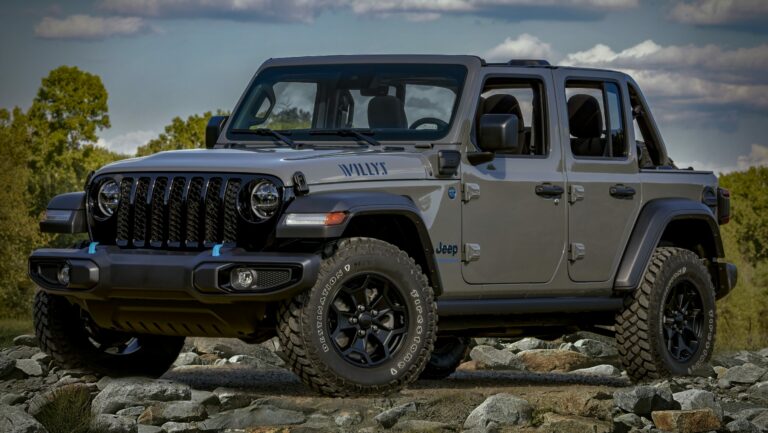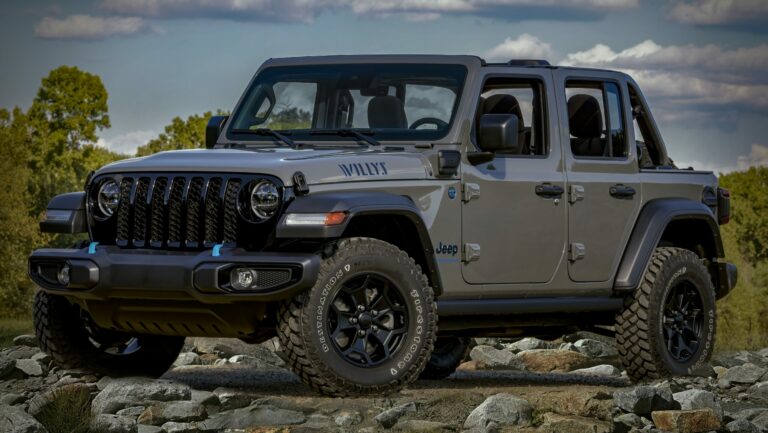Jeep SRT Stock Specs: A Comprehensive Guide to its Unadulterated Power
Jeep SRT Stock Specs: A Comprehensive Guide to its Unadulterated Power jeeps.truckstrend.com
Introduction: The Apex Predator of Performance SUVs
The Jeep Grand Cherokee SRT (Street & Racing Technology) stands as a testament to the idea that a utility vehicle can also be a high-performance machine. For years, it has carved out a unique niche in the automotive landscape, blending the practicality and rugged appeal of a Jeep with the heart-stopping power and agility typically reserved for sports cars. Understanding the Jeep SRT Stock Specs is not merely about reciting numbers; it’s about appreciating the meticulous engineering and design philosophy that allows this formidable SUV to accelerate like a supercar, handle with surprising precision, and stop on a dime, all while retaining its quintessential Jeep DNA.
Jeep SRT Stock Specs: A Comprehensive Guide to its Unadulterated Power
This comprehensive guide delves deep into the factory specifications of the Jeep Grand Cherokee SRT, providing a detailed look at what makes this vehicle a true legend in its class. From its monstrous engine to its finely tuned suspension and advanced braking system, we’ll explore every critical component that contributes to its exhilarating performance and distinctive character. For prospective owners, performance enthusiasts, or simply those curious about this automotive marvel, grasping these stock specifications is crucial to understanding its capabilities, maintenance needs, and overall value.
Core Performance: The Heartbeat of the Beast
At the very core of the Jeep Grand Cherokee SRT’s immense appeal lies its powertrain. Unlike its Hellcat-powered sibling, the Trackhawk, the SRT relies on naturally aspirated power, delivering a more visceral and linear power delivery.
Engine & Drivetrain
- Engine Type: The Jeep SRT is famously powered by the 6.4-liter (392 cubic inch) HEMI V8 engine. This legendary powerplant, a hallmark of Dodge and Jeep performance vehicles, is renowned for its robust construction and significant power output.
- Displacement: 6.4 liters (6,417 cc). This large displacement contributes to its impressive torque figures available across a wide RPM range.
- Horsepower: Early models (WK2 generation, 2012-2017) typically produced 470 horsepower. Later models (2018 onwards) saw a slight bump to 475 horsepower, a testament to continuous refinement.
- Torque: 465 lb-ft of torque across all model years. This substantial torque figure is key to the SRT’s explosive acceleration and strong pulling power.
- Transmission: An 8-speed TorqueFlite automatic transmission, precisely calibrated to handle the HEMI’s power, ensures smooth shifts and optimal gear ratios for both performance and efficiency. It features paddle shifters for manual control.
- Drivetrain: The SRT features Jeep’s Quadra-Trac SRT active full-time four-wheel-drive system. This sophisticated system uses a BorgWarner single-speed transfer case with a limited-slip differential to distribute torque, ensuring maximum traction during aggressive driving. It’s designed for on-road performance rather than extreme off-roading.
- Performance Metrics (Typical):
- 0-60 mph: Approximately 4.4-4.8 seconds (depending on model year and conditions).
- Quarter-Mile: Mid-12 second range.
- Top Speed: Electronically limited to around 160 mph (257 km/h).

![]()
Why these specs matter:
These figures highlight the SRT’s ability to compete with dedicated sports cars in a straight line, defying its SUV stature. The naturally aspirated HEMI offers a raw, responsive feel, making it an engaging drive for enthusiasts.
Chassis & Suspension: Taming the Beast
Putting nearly 500 horsepower to the ground effectively requires a highly capable chassis and a meticulously tuned suspension system. The Jeep SRT is no exception, featuring components designed for precision handling and stability.
- Suspension Type: Independent front suspension with short and long arms (SLA) and a multi-link rear suspension. This setup provides a sophisticated balance between ride comfort and handling prowess.
- Adaptive Damping System: Standard on the SRT, the Bilstein adaptive damping suspension system is a cornerstone of its dynamic capabilities. It automatically adjusts shock absorber stiffness based on road conditions, driving mode (e.g., Auto, Sport, Track, Tow, Snow), and driver input. This allows for a comfortable ride during cruising and firm, controlled handling during spirited driving.
- Ride Height: The SRT sits lower than standard Grand Cherokee models, contributing to a lower center of gravity and improved aerodynamics, both crucial for high-speed stability.
- Steering: An electro-hydraulic power steering system provides precise feedback and response, contributing to the SRT’s surprisingly nimble feel for its size.
Practical Advice:
Understanding the adaptive suspension is key. Utilizing the Selec-Track system’s various modes allows drivers to tailor the vehicle’s dynamics to specific conditions, from daily commuting to track days. Regular checks of suspension components are vital, especially given the forces they endure.
Braking System: Stopping Power to Match the Go
Performance isn’t just about acceleration; it’s equally about the ability to stop quickly and safely. The Jeep SRT comes equipped with a formidable braking system designed to handle repeated high-speed stops.
- Brake Calipers: High-performance Brembo braking system with six-piston calipers up front and four-piston calipers at the rear. These multi-piston calipers provide superior clamping force.
- Rotor Size:
- Front: 15.0-inch (380 mm) vented rotors.
- Rear: 13.8-inch (350 mm) vented rotors.
- The large, vented rotors dissipate heat efficiently, reducing brake fade during aggressive driving.
- Stopping Distance: From 60-0 mph, the SRT can typically stop in around 110-115 feet, a figure comparable to many sports cars.
Important Considerations:
Brembo brakes offer phenomenal performance but can be costly to maintain. Replacement pads and rotors are premium items. For those who track their SRT, upgrading to more aggressive pads or fluid might be beneficial, but for stock street use, the factory setup is more than adequate.
Exterior & Aerodynamics: Form Meets Function
The Jeep SRT’s aggressive stance and unique styling cues are not just for show; they are integral to its performance and aerodynamic efficiency.
- Body Kit: Features unique front and rear fascias, side skirts, and a prominent rear spoiler. These elements contribute to improved aerodynamics and cooling.
- Hood: A sculpted hood with functional heat extractors helps dissipate engine heat during strenuous operation.
- Wheels & Tires: Typically equipped with 20-inch lightweight forged aluminum wheels.
- Tires: High-performance all-season or summer tires (e.g., Pirelli Scorpion Verde or P-Zero) in sizes like 295/45ZR20. These wide, low-profile tires provide excellent grip.
- Weight & Dimensions:
- Curb Weight: Approximately 5,100-5,300 lbs (2,300-2,400 kg), depending on specific options and model year.
- Length: Around 191-192 inches.
- Width: Around 77-78 inches.
- Height: Around 68-69 inches.
Tips for Owners:
Given the specific tire sizes, replacement tires can be expensive. Regular tire rotation and alignment are crucial to maximize tire life and maintain handling characteristics. The unique bodywork also means potential higher repair costs in the event of minor collisions.
Interior & Technology: Performance-Oriented Comfort
Inside, the Jeep SRT combines luxury and practicality with a clear focus on performance.
- Seating: Heavily bolstered performance seats (leather and suede upholstery options) designed to hold occupants firmly during aggressive maneuvers. SRT badging is prominent throughout.
- Infotainment: Uconnect infotainment system with an 8.4-inch touchscreen, featuring navigation, Apple CarPlay, and Android Auto (on later models).
- Performance Pages: A standout feature, "Performance Pages" within the Uconnect system allows drivers to monitor real-time performance data, including G-forces, horsepower, torque, 0-60 times, quarter-mile times, and braking distances. This is a crucial tool for enthusiasts.
- Driver Information Display: A reconfigurable digital display in the instrument cluster provides vital vehicle information and performance metrics.
- Safety Features: Standard safety features include stability control, traction control, multiple airbags, and a rearview camera. Later models offered advanced driver-assistance systems like adaptive cruise control, blind-spot monitoring, and forward collision warning.
Actionable Insights:
Familiarize yourself with the Performance Pages. They are not just a gimmick; they provide valuable feedback on your driving and the vehicle’s capabilities. Regularly update your Uconnect software for optimal performance and access to the latest features.
Driving Experience & Practicality: A Dual Nature
The Jeep Grand Cherokee SRT’s stock specs translate into a driving experience that is both thrilling and surprisingly practical. It offers a unique blend of supercar-level acceleration with the utility of an SUV.
For daily driving, the adaptive suspension in "Auto" mode provides a reasonably compliant ride, absorbing road imperfections well. The elevated driving position and ample cargo space make it a capable family hauler or grocery getter. However, its performance DNA is always lurking, ready to be unleashed with a heavy foot.
When pushed, the SRT transforms. "Sport" or "Track" modes stiffen the suspension, quicken throttle response, and adjust transmission shift points, turning the SUV into a formidable performance machine. Its all-wheel-drive system ensures phenomenal grip out of corners, and the powerful Brembo brakes inspire confidence.
Potential Challenges/Considerations:
- Fuel Economy: With a large V8 and performance focus, fuel economy is not a strong suit. Expect single-digit to low-teen MPG figures in city driving.
- Tire Wear: High-performance tires on a heavy, powerful vehicle will wear faster, especially with aggressive driving.
- Maintenance Costs: Performance parts, larger brakes, and specialized fluids often lead to higher maintenance costs compared to standard SUVs.
- Insurance: Due to its performance capabilities and higher value, insurance premiums can be significantly higher.
Price Table: Typical Used Market Value Ranges for Jeep Grand Cherokee SRT
Since the naturally aspirated Jeep Grand Cherokee SRT is no longer produced new (it was succeeded by the supercharged Trackhawk), pricing is based on the used market. Prices can vary significantly based on mileage, condition, optional extras, regional demand, and specific model year. This table provides typical ranges for well-maintained examples.
| Model Year | Engine | Horsepower (HP) | Torque (lb-ft) | 0-60 mph (sec) | Typical Used Price Range (USD) | Key Features |
|---|---|---|---|---|---|---|
| 2012-2013 | 6.4L HEMI | 470 | 465 | 4.8 | $18,000 – $28,000 | First WK2 SRT, 5-spd auto (early), Brembo Brakes |
| 2014-2015 | 6.4L HEMI | 470 | 465 | 4.8 | $22,000 – $32,000 | 8-spd auto, Uconnect 8.4", Selec-Track |
| 2016-2017 | 6.4L HEMI | 475 | 465 | 4.7 | $28,000 – $38,000 | Slight HP bump, improved tech |
| 2018-2021 | 6.4L HEMI | 475 | 465 | 4.4-4.5 | $35,000 – $55,000+ | Refined interior, advanced safety options, Performance Pages |
Note: These are estimates and subject to market fluctuations. Always conduct thorough research and vehicle inspections when considering a used purchase.
Frequently Asked Questions (FAQ) about Jeep SRT Stock Specs
Q1: What does "SRT" stand for?
A1: SRT stands for "Street & Racing Technology," which was Fiat Chrysler Automobiles’ (FCA) in-house high-performance automobile group.
Q2: Is the Jeep Grand Cherokee SRT still produced new?
A2: No, the naturally aspirated 6.4L HEMI Grand Cherokee SRT ceased production after the 2021 model year. It was effectively replaced by the even more powerful, supercharged 6.2L Hellcat-powered Grand Cherokee Trackhawk.
Q3: What’s the main difference between the Jeep Grand Cherokee SRT and the Trackhawk?
A3: The primary difference is the engine. The SRT uses a naturally aspirated 6.4L HEMI V8 (475 hp), while the Trackhawk is equipped with a supercharged 6.2L Hellcat HEMI V8 (707 hp). The Trackhawk also features stronger internal components in the drivetrain to handle the additional power.
Q4: Can the Jeep SRT be used as a daily driver?
A4: Absolutely. Despite its performance capabilities, the Jeep SRT retains the practicality and comfort of a Grand Cherokee, making it a perfectly viable daily driver. However, be prepared for higher fuel consumption and potentially increased maintenance costs compared to a standard SUV.
Q5: What kind of fuel does the Jeep SRT require?
A5: The Jeep Grand Cherokee SRT requires premium unleaded gasoline (91 octane or higher) for optimal performance and to prevent engine knocking.
Q6: How reliable is the Jeep Grand Cherokee SRT?
A6: Generally, the 6.4L HEMI engine is considered robust and reliable. However, like any high-performance vehicle, proper maintenance, adherence to service schedules, and mindful driving are crucial for longevity. Components like brakes and tires will wear faster and require more frequent replacement than on a standard vehicle.
Q7: Does the Jeep SRT have any off-road capabilities?
A7: While it’s a Jeep, the SRT is primarily designed for on-road performance. Its lower ride height, high-performance street tires, and performance-tuned suspension limit its off-road capabilities significantly compared to other Grand Cherokee trims. It’s not intended for serious trail driving.
Conclusion: The Enduring Legacy of Power and Practicality
The Jeep Grand Cherokee SRT, through its meticulously engineered stock specifications, stands as a remarkable achievement in automotive design. It shattered perceptions of what an SUV could be, proving that a vehicle synonymous with rugged utility could also be a legitimate performance contender. From its roaring 6.4L HEMI engine and sophisticated adaptive suspension to its confidence-inspiring Brembo brakes and driver-focused interior, every aspect of the SRT was designed to deliver an exhilarating driving experience without completely sacrificing practicality.
Understanding these stock specs is not just academic; it’s essential for anyone looking to purchase, maintain, or simply appreciate this unique machine. The SRT’s legacy lies in its ability to offer a thrilling blend of power, handling, and everyday usability, cementing its place as an iconic performance SUV that continues to captivate enthusiasts worldwide. It’s a testament to the fact that with the right engineering, you truly can have the best of both worlds.
